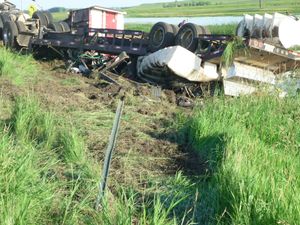LAKE NORDEN, S.D. – The newly expanded Agropur cheese plant in Lake Norden faces a possible fine from state regulators after tests showed the plant’s wastewater that is dumped directly into the Big Sioux River violated state pollution limits in four categories.
Tests of the wastewater released in the expanded plant’s first two months of operation showed nine violations for excessive amounts of nitrates and ammonia and high levels of alkalinity and conductivity, according to data from the U.S. Environmental Protection Agency.
The violations came after the plant underwent a $252 million expansion over the past year that tripled its capacity to process milk into cheese. Agropur, a Canadian-owned firm that operates nine production plants in five U.S. states, spent about $28 million on a new wastewater-treatment system to handle wastes from the expanded plant.
Officials from the plant, the state and area water-management agencies were all disappointed with the early pollution violations.
“The data is showing they’ve had some violations and it was worse than I expected,” said Al Spangler, a water-treatment permit manager with the state Department of Environment & Natural Resources, which regulates industrial and municipal wastewater-treatment systems. “It’s not uncommon to have some violations at the beginning and after such a large industrial expansion, but the requirements are that they have to be meeting the limits at the beginning of their discharge and moving forward. They had violations on several different parameters, and we felt that we needed to take action right away.”
Spangler said the state is in the process of working with Agropur to correct the problems and is still determining what financial penalty the plant may face.
The violations come after a lengthy debate over issuance of a new wastewater permit for the expanded facility. Initially, the state did not plan to place limits on nitrate levels in the discharge water, but after an outcry by area water-management officials, the state enacted limits on nitrates, among the most worrisome of pollutants in the Big Sioux River. The allowable limits of nitrates – a maximum of 31.5 parts per million released on any single day and a monthly average of 18 ppm – were significantly higher than water managers requested, and still the plant was unable to meet them in its first two months of operation. Several agencies and individuals who commented during the permitting process argued for a limit of 10 ppm of nitrates, which is the level considered safe for drinking water.
“We stood up and didn’t approve of the discharge permit, and while we’re glad the state listened to us and created a standard, now [Agropur has] already violated it,” said Martin Jarrett, general manager of the Big Sioux Community Water System that lies just downriver from the Agropur discharge site. “It really is in the state’s court now and we’re all waiting to see what actions they take.”
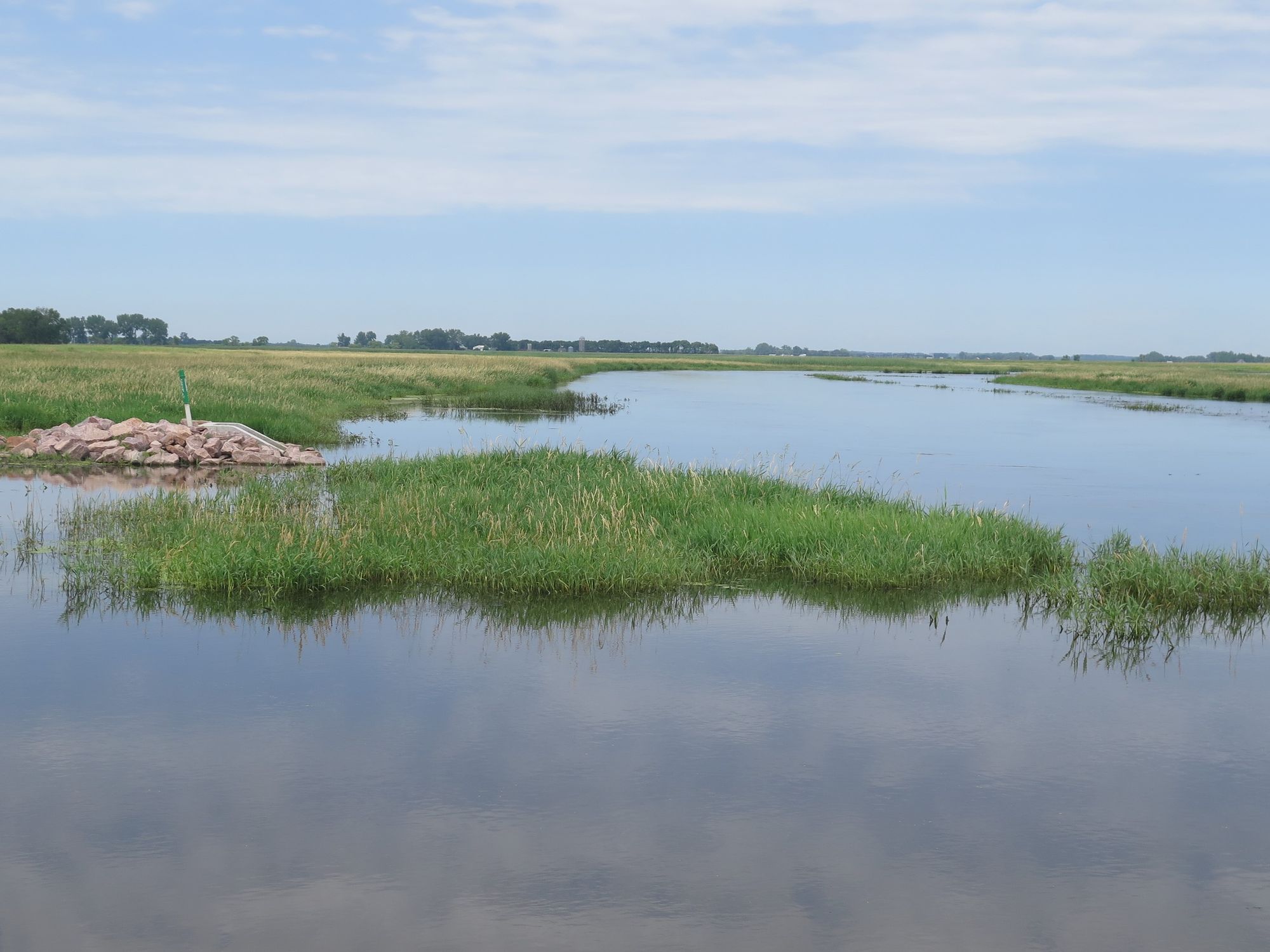
The plant had a 40 ppm nitrate release on one day in May, federal data show. The plant also had three violations of ammonia-discharge limits, including a monthly average in April that was nearly five times higher than the allowable limit, and a discharge on one day that month that was nearly seven times the limit. The plant was also barely within limits on parameters known as chronic toxicity and total dissolved solids during April and May.
High nitrate levels can restrict oxygen absorption in humans who ingest polluted water and are especially dangerous to infants, who can suffer from methemoglobinemia, also known as “blue baby syndrome.” High ammonia levels can kill fish and other life forms that live in the water.
State officials and regional water managers say the potential impact of the Agropur violations is minimal at this time due to abnormally high water levels and flow rates in the Big Sioux River, which help dilute pollutants. No drinking-water systems in northeast South Dakota pull water directly from the Big Sioux River, but several systems rely on the aquifer that is fed by waters from the river.
“It doesn’t take much of a calculation to figure out that 70 percent of the water in my wells comes from the river, so what comes down that river does really affect me and my customers,” said Jarrett, whose system provides drinking water from the Big Sioux Aquifer to about 10,000 people in Lake and Moody counties. “Historically, if you keep loading the Big Sioux River with high nitrate levels, if you’re putting in 18 ppm per month, it will persist longer and become an issue with the drinking water.”
Tim Czmowski, a lifelong South Dakota resident who serves as vice president of Midwest operations for Agropur, said the company has taken swift and extensive action to prevent future wastewater violations.
“Agropur takes its environmental responsibility very seriously and we have put forth a great amount of effort in order to comply with state limits,” Czmowski said. “I’m from South Dakota, and I have a personal responsibility to make sure that we do comply.”
Czmowski said the company has been working closely with the state and numerous experts to refine and improve its wastewater-treatment processes.
“It’s a process, and we’re very confident we will come into compliance,” he said. “I feel that we’re on a good path, and obviously the state of South Dakota is aware of every detail.”
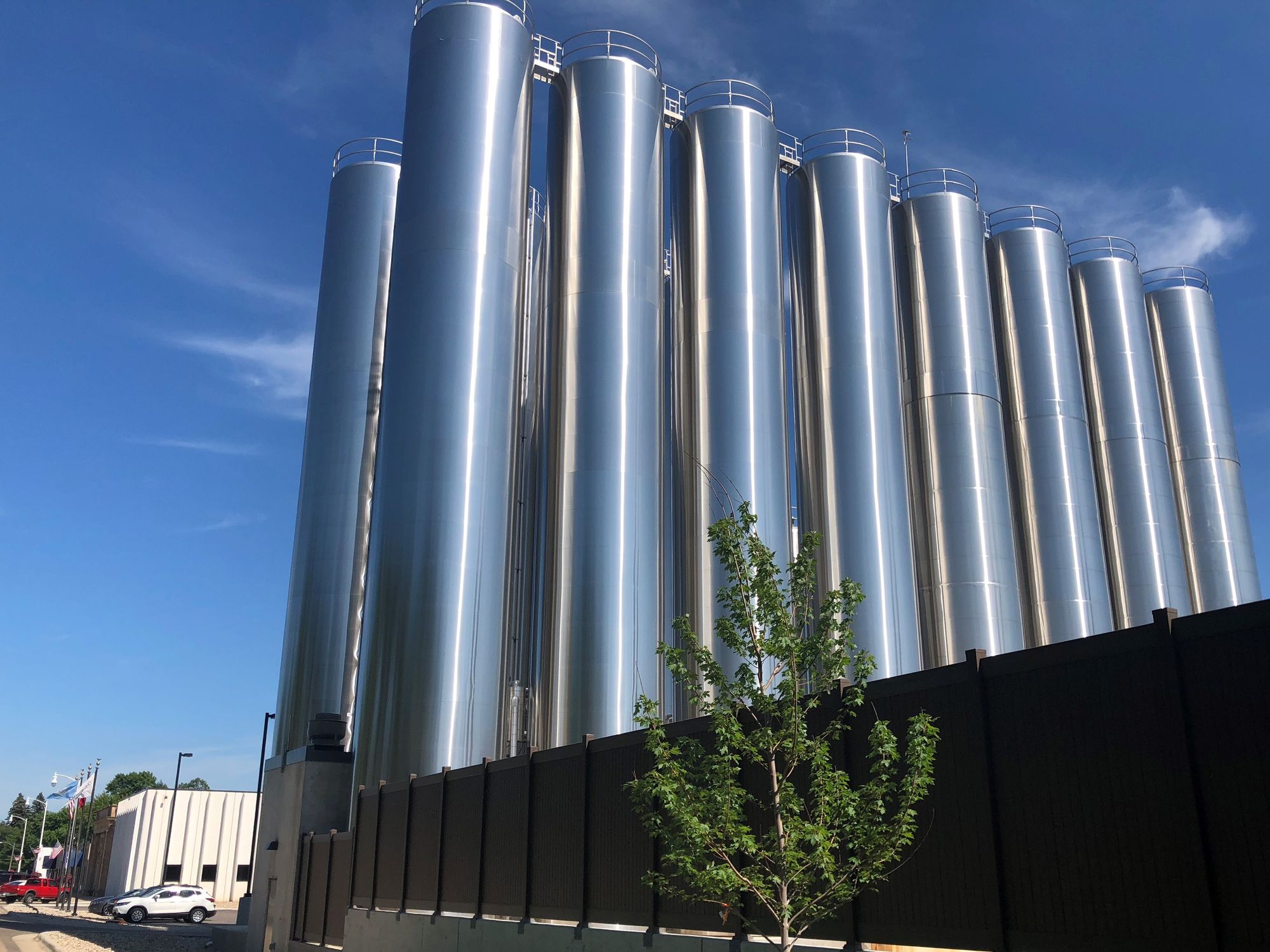
Small town, major expansion
Agropur invested $252 million to roughly triple the production capacity of its cheese plant in Lake Norden from processing about 3.3 million pounds of milk per day to more than 9 million pounds per day, Czmowski said. Production has ramped up since the expanded plant began operating this spring but will not likely reach full capacity for two to four years, he said. The plant produces cheeses that include mozzarella, provolone, Romano, asiago, Muenster, Parmesan, Monterey Jack and cheddar.
As part of the expansion, the company planned to spend $24 million on a new wastewater-treatment plant, but Czmowski said that in order to meet state permit requirements, Agropur had to spend close to $28 million. The company constructed a 14.5-mile pipeline to carry treated wastewater to a discharge site directly into the Big Sioux River about three miles northwest of Estelline.
The plant expansion, described by state officials one of the largest single industrial projects in state history, is expected to generate a $1 billion overall annual economic impact and will allow the plant to hire about 125 new employees beyond its existing workforce of 225.
Obtaining more milk from dairies in South Dakota and other states is one challenge to operating at full capacity, Czmowski said. The plant now needs milk from about 85,000 more cows than were producing for Agropur prior to the expansion, which will create economic opportunities for existing or new dairy farmers across the state and region, he said.
The plant in Lake Norden, a Hamlin County town of fewer than 500 people, was built in the 1950s and has had different ownership over the years, with Agropur purchasing the plant in 2014, Czmowski said.
Formerly, the plant used a series of manmade wetlands to filter its treated wastewater that eventually dumped into a tributary of the Big Sioux River. The plant had a strong track record of meeting pollution limits with the former system, which is a main reason the state initially felt comfortable not placing nitrate limits on the expanded plant’s wastewater, Spangler said.
The new treatment system will feature many of the same elements of the old system but also use a new anaerobic processing system that uses several technologies to further screen out and remove pollutants.
The old permit considered Agropur a “non-discharge” plant because wastes were not directly dumped into a flowing waterway. Now, the plant is allowed to dump up to 2 million gallons of treated wastewater per day directly into the Big Sioux River, one of the state’s most prominent rivers but also the most polluted. Early discharges from the new system have averaged just under 1 million gallons per day.
The Big Sioux River runs north-south through the most populated portion of South Dakota and forms the famed waterfall in downtown Sioux Falls that gave the city its name. Along its route, the river is subjected to daily dumping of treated wastes from several municipalities, numerous cheesemakers and other industrial plants, and also receives significant polluted runoff from farms. The city of Sioux Falls and the Smithfield pork-processing plant combined dump about 20 million gallons of treated human and industrial wastewaters into the river each day near downtown Sioux Falls.
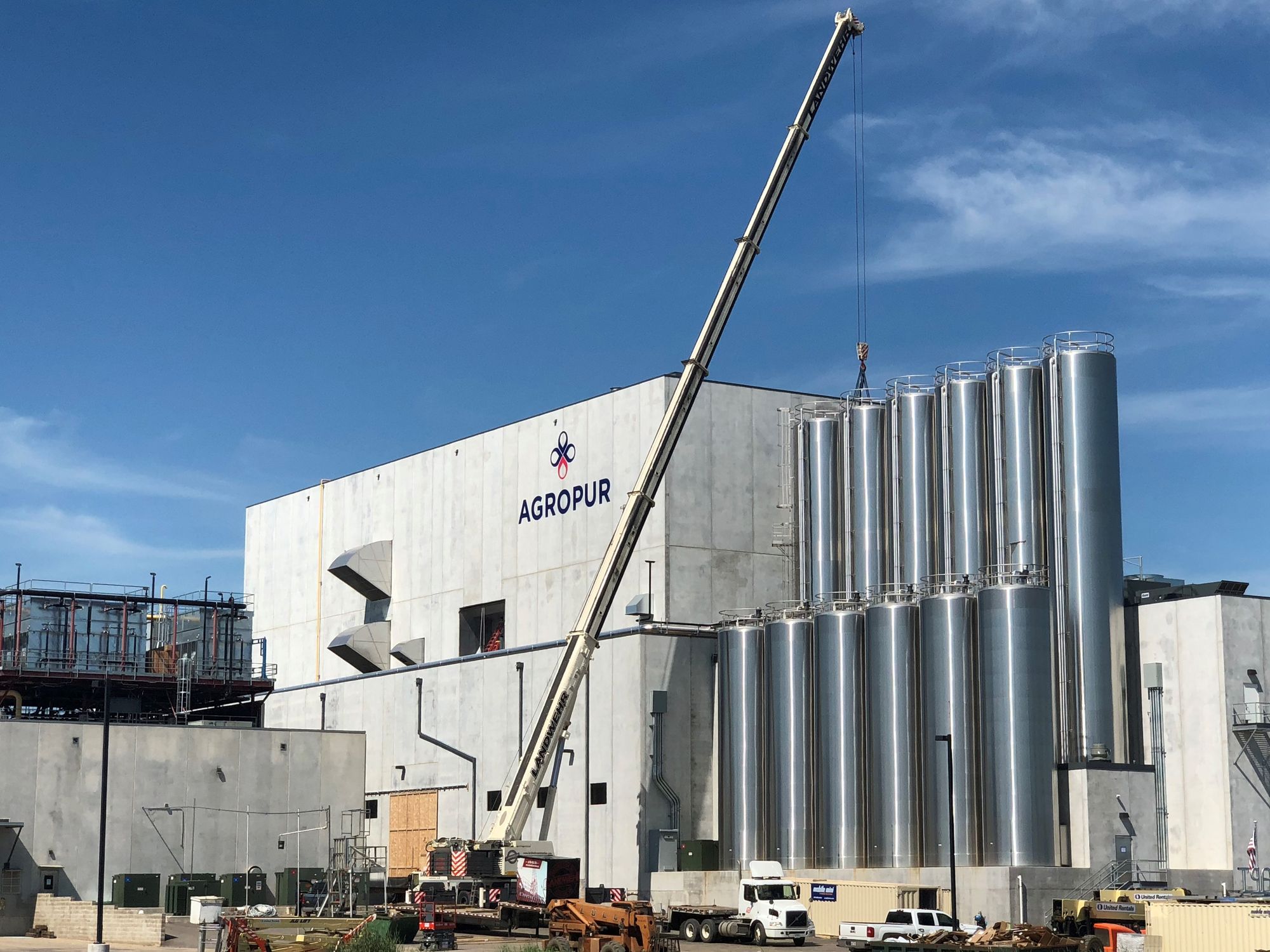
Concerns raised by numerous groups
Water managers along the route say that although the addition of pollutants from Agropur make up only a small portion of contaminants in the river, the cumulative effect of increased dumping is worrisome.
“We need to be concerned,” said Jay Gilbertson, manager of the East Dakota Water Development District in Brookings. “The fact that the impact of that violation on the river was inconsequential due to high river flows now isn’t the point. The Big Sioux does not have an unlimited capacity to assimilate whatever we dump into it.”
Other commenters noted that when flows in the Big Sioux reach historic lows, as they did during an extended drought in recent years, the Agropur discharges at the maximum allowable level could make up about 60 percent of the water flow in the river.
About a dozen individuals and groups filed formal comments to the state during the permitting process for the Agropur expansion, most raising concerns over pollution impacts on the Big Sioux River and also over the lack of nitrate limits. Commenters included eight water-management or -protection groups but also the state Game, Fish & Parks Department, which pointed out that the Big Sioux River in the discharge area is already impaired by high concentrations of E.coli and is impaired downstream owing to E.coli, mercury and suspended solids.
The EPA and U.S. Fish and Wildlife Service also urged the state to impose pollution limits. The wildlife service noted, and News Watch confirmed, that Agropur plants in Idaho, Iowa and Wisconsin have had wastewater-permit violations for exceeding limits of phosphorous, residual chlorine, suspended solids, and oxygen demand, and also for improper reporting of data.
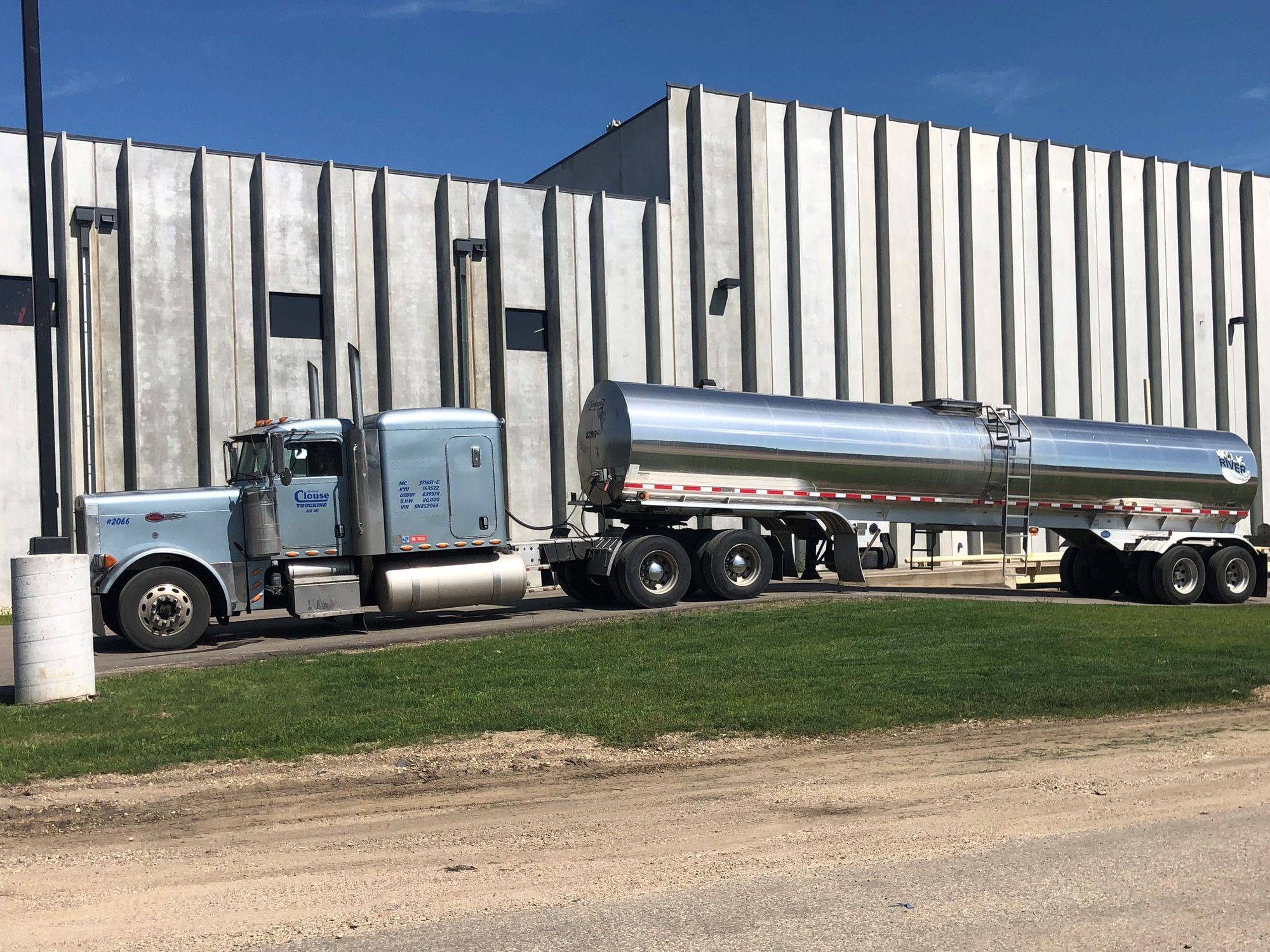
Czmowski said efforts to build and employ its new wastewater-treatment process were made more difficult by an unusually cold winter and wet spring in South Dakota.
“We did have very good success, but as normal start-up conditions occur, as we were running, we did have some mechanical failures that caused the treatment processes to be interrupted,” Czmowski said. “We fell out of balance and some violations occurred, which we take full responsibility for.”
Czmowski said plant officials have held almost daily conference calls with a team of employees since the violations occurred to improve the wastewater treatment, resulting in two or three minor improvements each day.
“We’ve made hundreds of adjustments and changes and invested in new equipment, we’ve rented equipment and we’ve contacted the best in the industry to tap their professional expertise,” Czmowski said. “We are also working with the state, and I would say that out of all the operations Agropur has, the standards that have been put forth by the state of South Dakota, they are a tall order and we will do whatever we can to meet them.”
Spangler said he plans to tour the Lake Norden plant later this month to check on progress and try to ensure future violations do not occur.
He said the public should be aware that the state’s regulatory role is one based both on protection of the environment and creating an economic environment that is conducive to industry and employment.
“In the DENR, our mission is to protect the environment without causing serious impact to economic development,” Spangler said. “In any permit we issue or anything we do, we have to consider both the environment and economic development, which is an important balancing act.”
In addition to fines, Agropur could face revocation of its wastewater permit if violations were to continue for an extended period of time, though that action is rare, Spangler said.

